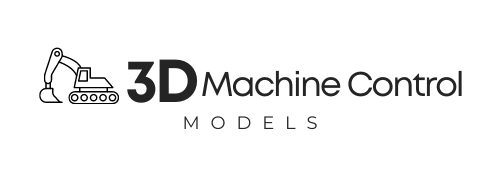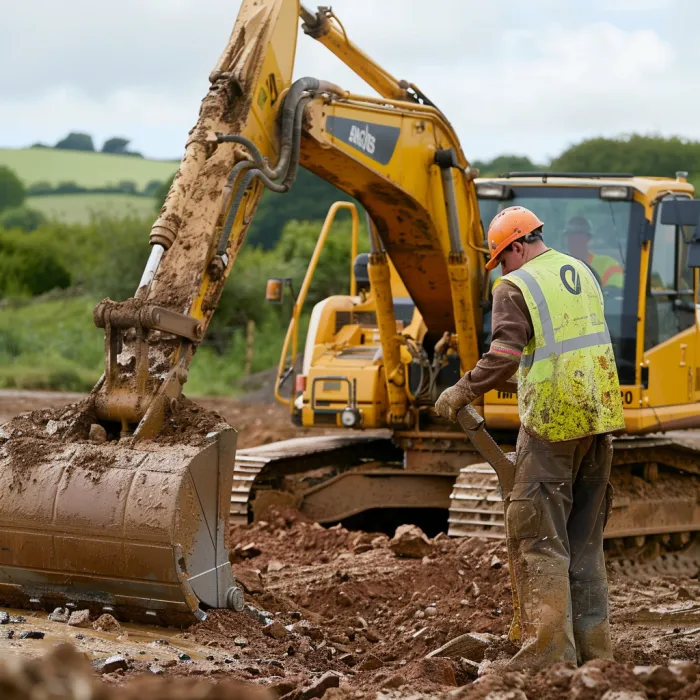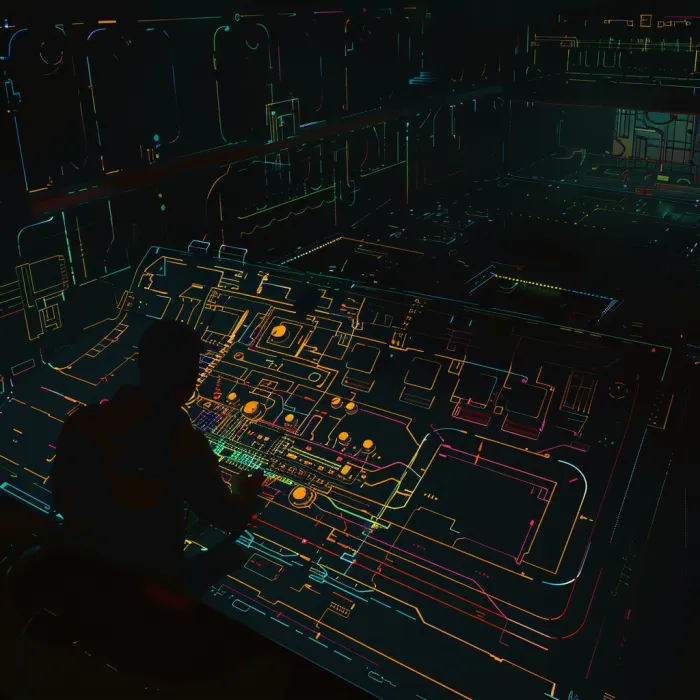
What is Machine Control?
Machine control is a technology that uses 3D design data and GPS positioning to guide construction equipment, such as excavators, dozers, and graders, allowing operators to work more accurately and efficiently.
By utilising 3D models of the jobsite, machine control systems can provide real-time guidance to the operator, ensuring that the equipment is working to the correct elevations, grades, and alignments. This technology helps to reduce errors, minimize rework, and improve overall productivity on construction projects.


Is machine control expensive to implement?
While the initial cost of implementing machine control may seem high, the long-term benefits often outweigh the investment. By improving accuracy, efficiency, and reducing rework, machine control systems can help contractors save time and money, ultimately leading to a positive return on investment.
How accurate is machine control?
Machine control systems are highly accurate, typically providing positioning information within a few centimeters. This level of accuracy is achievable through the use of advanced GPS technology and detailed 3D design data, which allows equipment operators to work to the exact specifications of the project.
Can machine control be used on small construction projects?
Yes, machine control can be beneficial for construction projects of all sizes. While larger projects may see the most significant cost savings and efficiency gains, smaller projects can still benefit from the improved accuracy and reduced rework that machine control provides.
Do operators need special training to use machine control?
While some training is necessary to familiarize operators with the machine control system and its components, most operators can quickly adapt to using the technology. Many manufacturers offer training and support to help contractors and their teams get up and running with machine control systems.
- 3D Design Model: A detailed, three-dimensional representation of the jobsite, including elevations, grades, and alignments.
- GPS Receiver: A device mounted on the construction equipment that receives signals from GPS satellites to determine its precise location on the jobsite.
- Onboard Computer: A computer installed in the equipment cab that processes the 3D design data and GPS information to provide real-time guidance to the operator.
- Control Panel: A display in the cab that shows the operator the current position of the equipment in relation to the 3D design, allowing them to make precise adjustments as needed.
How Machine Control Works
When a machine control system is implemented on a construction site, the process typically follows these steps:
- The 3D design data, created by engineers or surveyors, is loaded into the onboard computer of the construction equipment.
- As the equipment moves around the jobsite, the GPS receiver continually updates its position and sends this information to the onboard computer.
- The computer compares the equipment's current position to the 3D design data, calculating the necessary adjustments to keep the equipment on grade and in alignment.
- The control panel displays this information to the operator, providing visual guidance on how to adjust the equipment's position and elevation to match the design.
By following this process, machine control systems allow operators to work with unprecedented accuracy and efficiency, significantly reducing the risk of errors and rework.
The Benefits of Machine Control
Implementing machine control technology on your construction projects can yield a wide range of benefits, including:
- Increased Accuracy: By providing real-time guidance to operators, machine control systems help to ensure that work is completed to the exact specifications of the design, minimizing the risk of costly errors.
- Improved Efficiency: With machine control, operators can work more quickly and confidently, reducing the time spent on manual surveying and stakeout.
- Reduced Labor Costs: By streamlining operations and minimizing the need for rework, machine control systems can help to reduce labor costs and improve overall profitability.
- Enhanced Safety: Machine control technology can help to create a safer work environment by reducing the need for personnel on the ground near heavy equipment.
- Better Site Management: With real-time data collection and progress tracking, machine control systems provide valuable insights into the status of your project, allowing for better decision-making and resource allocation.
Machine control technology is revolutionizing the construction industry, offering contractors a powerful tool to improve accuracy, efficiency, and profitability. By understanding how machine control works and the benefits it can provide, you can make informed decisions about whether to implement this technology on your own projects. As the construction landscape continues to evolve, those who embrace innovation and adopt cutting-edge solutions like machine control will be well-positioned for success in the years to come.
What software is used to create machine control models?
Machine control models are typically created using specialized software such as Trimble Business Center, Topcon Magnet Office, or Leica iCON Office. These software packages allow users to process survey data, create 3D designs, and generate the necessary files for machine control systems.
What data is needed to create a machine control model?
To create a machine control model, you'll need accurate survey data of the existing site conditions, including elevations and contours. This data is typically collected using GPS, total stations, or aerial surveys. Additionally, you'll need detailed design data, such as CAD files or 3D models, that outline the proposed grades, slopes, and alignments for the project.
How long does it take to create a machine control model?
The time required to create a machine control model varies depending on the complexity of the project and the quality of the available data. In general, a skilled technician can create a model for a simple project in a few hours, while more complex projects may take several days. It's important to allocate sufficient time for data processing, design work, and quality control checks.
What is the process for setting up machine control on a construction site?
To set up machine control on a construction site, follow these general steps:
- Establish survey control points on the site using GPS or total stations.
- Load the machine control model onto the equipment's onboard computer.
- Calibrate the GPS receiver and other sensors on the equipment.
- Verify the accuracy of the system by comparing the machine control data to known survey points.
- Train operators on how to use the machine control system effectively.
- Regularly monitor the system's performance and make any necessary adjustments.
How do you ensure the accuracy of a machine control model?
To ensure the accuracy of a machine control model, it's important to:
- Use high-quality, accurate survey data when creating the model.
- Double-check the design data for any errors or discrepancies.
- Verify the model's accuracy using independent survey points or as-built data.
- Regularly calibrate and maintain the machine control equipment.
- Provide thorough training to operators to ensure they understand how to use the system correctly.
By following these best practices, contractors can help ensure that their machine control models are accurate and reliable.
Can machine control models be updated during a project?
Yes, machine control models can be updated during a project to reflect any changes in the design or site conditions. This is typically done by importing new survey data or design files into the modeling software, making the necessary adjustments, and then uploading the updated model to the equipment. It's important to communicate any changes to all stakeholders and ensure that everyone is working from the most current version of the model.
What happens if there is an error in the machine control model?
If an error is discovered in the machine control model, it's crucial to address it promptly to avoid costly mistakes or rework. The first step is to identify the source of the error, whether it's in the survey data, design files, or the model itself. Once the error is identified, the model should be updated and re-uploaded to the equipment. In some cases, additional survey work or design revisions may be necessary to fully resolve the issue. Good communication and collaboration between all parties involved in the project can help minimize the impact of any errors and ensure a successful resolution.